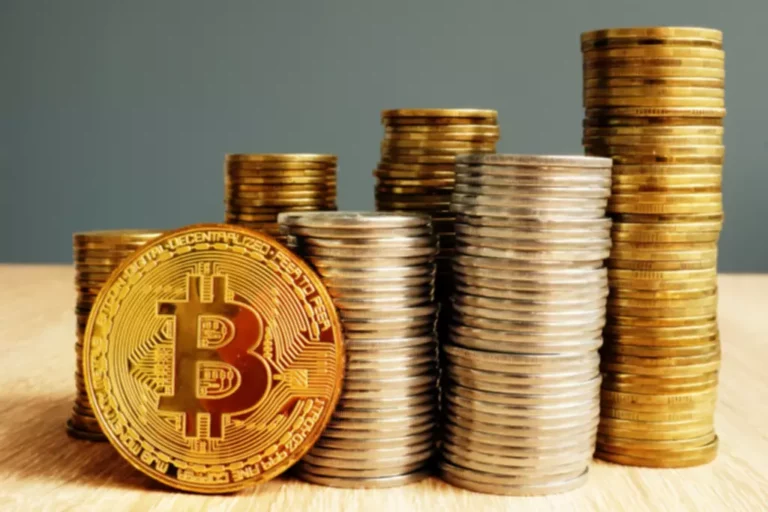Yield farming, also known as liquidity mining, entails offering liquidity to DeFi protocols by depositing property into liquidity swimming pools. In return, liquidity providers (LPs) receive rewards in the form of tokens, usually the native tokens of the protocol or project. By allocating your cryptocurrency property to liquidity pools, you’re not simply bolstering trading exercise; you’re also positioning your self to earn rewards. These rewards may be in the type of curiosity, additional tokens, or maybe a portion of the trading charges accrued by the DeFi trade. This mechanism not only incentivizes liquidity suppliers but also ensures a gradual influx of funds into the liquidity pools.

What Is Liquidity Mining?

On a concluding note, it is fairly clear that staking in addition to yield generation and liquidity miners present distinct approaches for investing crypto property. The rising consideration towards crypto belongings is undoubtedly opening up many new alternatives for investors. However, investors want to understand the methods they want to observe for the sort of returns they’re anticipating. With larger stakes within the protocol, buyers may get better rewards from the network. It is important to notice that rewards in the case of staking are allocated on-chain. Therefore, new tokens of the cryptocurrency are minted and distributed as staking rewards for the validation of each block.
Larger Returns On Investment
When it comes to cryptocurrency, there are two core consensus mechanisms that stand out, and these are Proof of Work (PoW) and Proof of Stake (PoS). Whereas PoW is presently essentially the most dominant protocol in the business, PoS has also grown more and more well-liked. Yield farming additionally supplies a lifeline for those tokens with low buying and selling volume in the open market to be traded comfy. Users who don’t need to use a crypto pockets for staking can use a crypto change as an alternative, and you can begin right after you purchase cardano. Different https://www.xcritical.com/ high staking cryptocurrencies are Polkadot and CAKE on the PancakeSwap exchange. This provides most safety on your staked funds, as there is no web connection.
A liquidity pool is a crowdsourced pool of digital belongings locked in a wise contract. It’s one of the major applied sciences behind the present DeFi Market and is used to facilitate trades between digital assets. Liquidity pools are essential for automated market makers (AMM), yield farming, borrow-lend protocols, on-chain insurance coverage, blockchain gaming, synthetic assets, etc. To create a market, liquidity suppliers (LPs) add an equal value of tokens to a pool for crypto trading. In exchange for his or her liquidity, LPs earn rewards from the trades occurring of their pool.
By locking in crypto assets, customers can reap returns within the type of rewards, interest funds, and even a fraction of transaction fees from trading activity on decentralized change. The liquidity swimming pools in the case of yield farming might refer to bank accounts within the typical sense. Yield generation is the apply that includes buyers locking in their crypto assets in liquidity swimming pools based mostly on good contracts. Now, the assets locked in the liquidity pools are available for different users to borrow in the same protocol. Staking is an more and more in style pattern within the cryptocurrency industry as it permits users to earn a passive but excessive earnings whereas supporting their favorite network or protocol. In return, stakers are rewarded with more cash or tokens, which may generate a gradual stream of revenue.
The act of offering liquidity is a fundamental cog within the wheel of DeFi techniques. Liquidity provision primarily means making property obtainable for trading or borrowing. When one chooses to supply liquidity, it includes committing belongings to the pool in order that market members have enough funds to borrow or commerce. Selecting to mine in pools with low liquidity can additional escalate these risks.
Is Yield Farming Price It?
Whether Or Not you opt for yield farming, liquidity mining, or a mix of both, always conduct thorough analysis and keep informed to make informed choices within the DeFi area. Liquidity pools preserve equilibrium and regulate for token costs throughout unstable market situations. If users decide to withdraw their belongings when token prices have deviated from their time of deposit, impermanent loss turns into everlasting. As A Substitute, they earn a proportion of network charges when they validate transactions.
- When staking, your funds act as collateral on a blockchain as they validate transactions.
- Yearn uses varied products on its platform to bring concerning the highest cryptocurrency yield attainable.
- At the same time, you’d nonetheless notice some prominent dangers in staking cryptocurrencies, such as slashing, volatility dangers, validator dangers, and server dangers.
- Breaking it down, liquidity mining requires customers to deposit their digital belongings into a liquidity pool on a decentralized trade.
- These methods provide ways to earn passive revenue from your crypto investments without the necessity for continuous buying and selling.
- Other top staking cryptocurrencies are Polkadot and CAKE on the PancakeSwap exchange.
With YieldVault, investors could make excessive returns on their crypto property by using the DeFiChain vaults, which reap the benefits of current negative interest rates. Each blockchain has a bunch of yield farms, and so they defi yield farming development all supply completely different conditions. Others concentrate on finding the best yield farm for the belongings they already own. As with any system, yield farmers assist the system because they earn an incentive from the platform they use.
As a outcome, yield farming may be a unbelievable strategy to diversify your investment portfolio and enhance your income. Completely Different types of yield farming firms present varied monetary companies, nearly all of which generate amazingly large curiosity. You would possibly earn zero.01% to 0.25% a year from massive banks, however these low returns can’t match the 20% to 200% profits certain DeFi platforms promise. The greater the rate of interest, the riskier the staking pool — it’s fairly a frequent correlation. Hold an eye fixed out for fraud and unproven platforms that would value you cash. AMMs enable traders to trade more efficiently and conveniently with out intermediaries or third events.
The extra customers stake on a blockchain, the extra decentralized it’s, and it’s more durable to attack it. Evaluate potential returns and contemplate components such as APY (Annual Percentage Yield), tokenomics, and protocol incentives when selecting between yield farming and staking. Though liquidity mining is a relatively new investment technique for crypto assets, it appears that it will be round for a long time to come back. Liquidity mining may be a great possibility for you if you’re in search of an funding technique that will serve you well in 2022 and past. When it involves passive investments like yield farming, staking has a decreased danger issue.
It Is important to conduct thorough analysis and only make investments what you can afford to lose. Liquidity mining is the process the place crypto holders lend belongings Volatility (finance) to a decentralized trade in return for rewards. These rewards are generally derived from trading fees traders pay for swapping tokens. In liquidity mining, yield farmers supply swimming pools with crypto property and earn charges and tokens in return all through the complete yield farming course of.
Stakers lock up their tokens in a delegated staking wallet or good contract to take part in community consensus. Liquidity mining is taken into account to be a subset of Yield farming wherein the liquidity suppliers get a share of fees and platform tokens as rewards. This difference is commonly ignored by most because Yield farming in itself consists of Liquidity Mining. It is simply the character of the distribution of rewards that makes them completely different. Yield Farming is a fancy set of strategies for earning rewards by lending cryptocurrencies to DeFi platforms at Decentralized Exchanges (DEXs).
